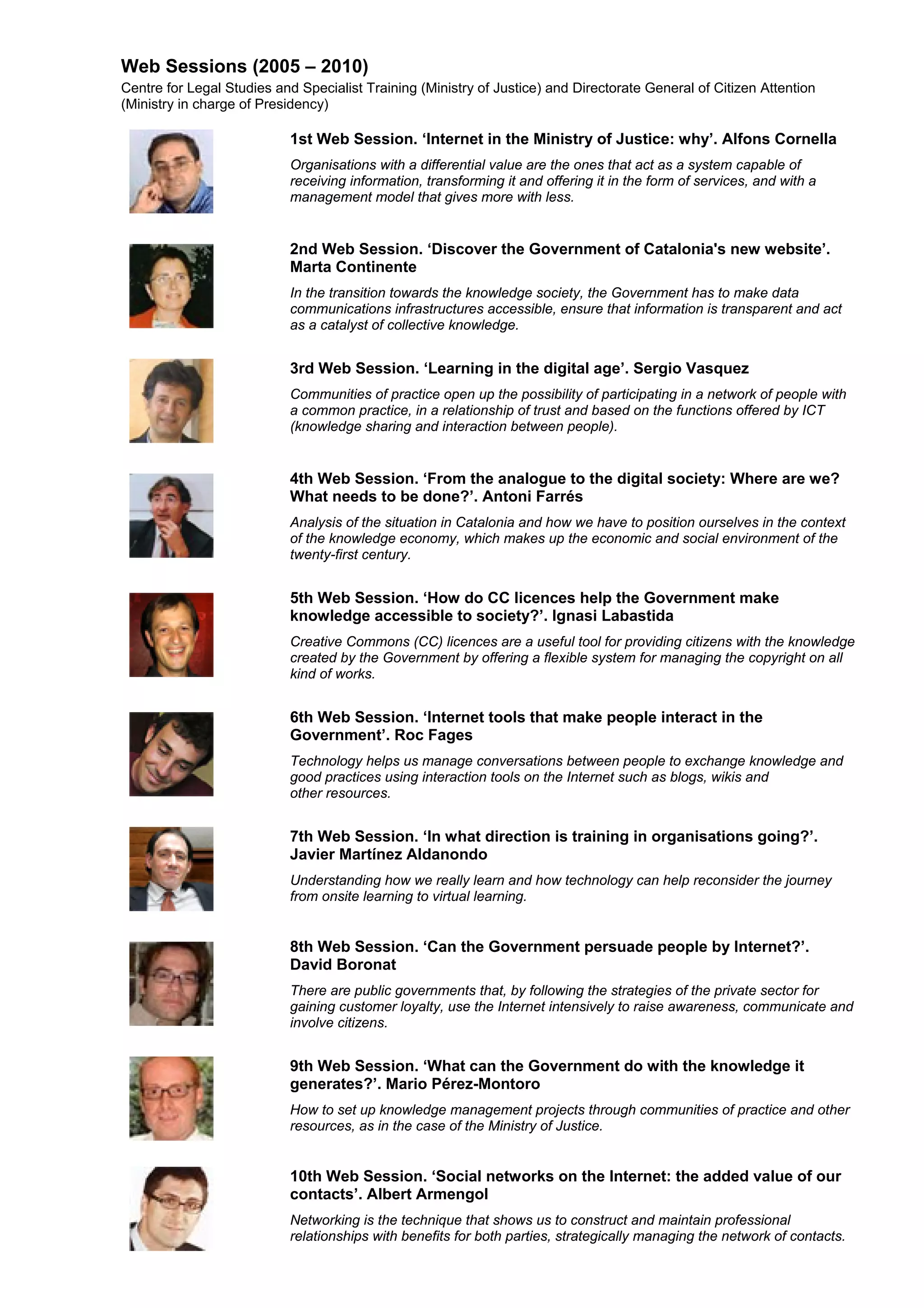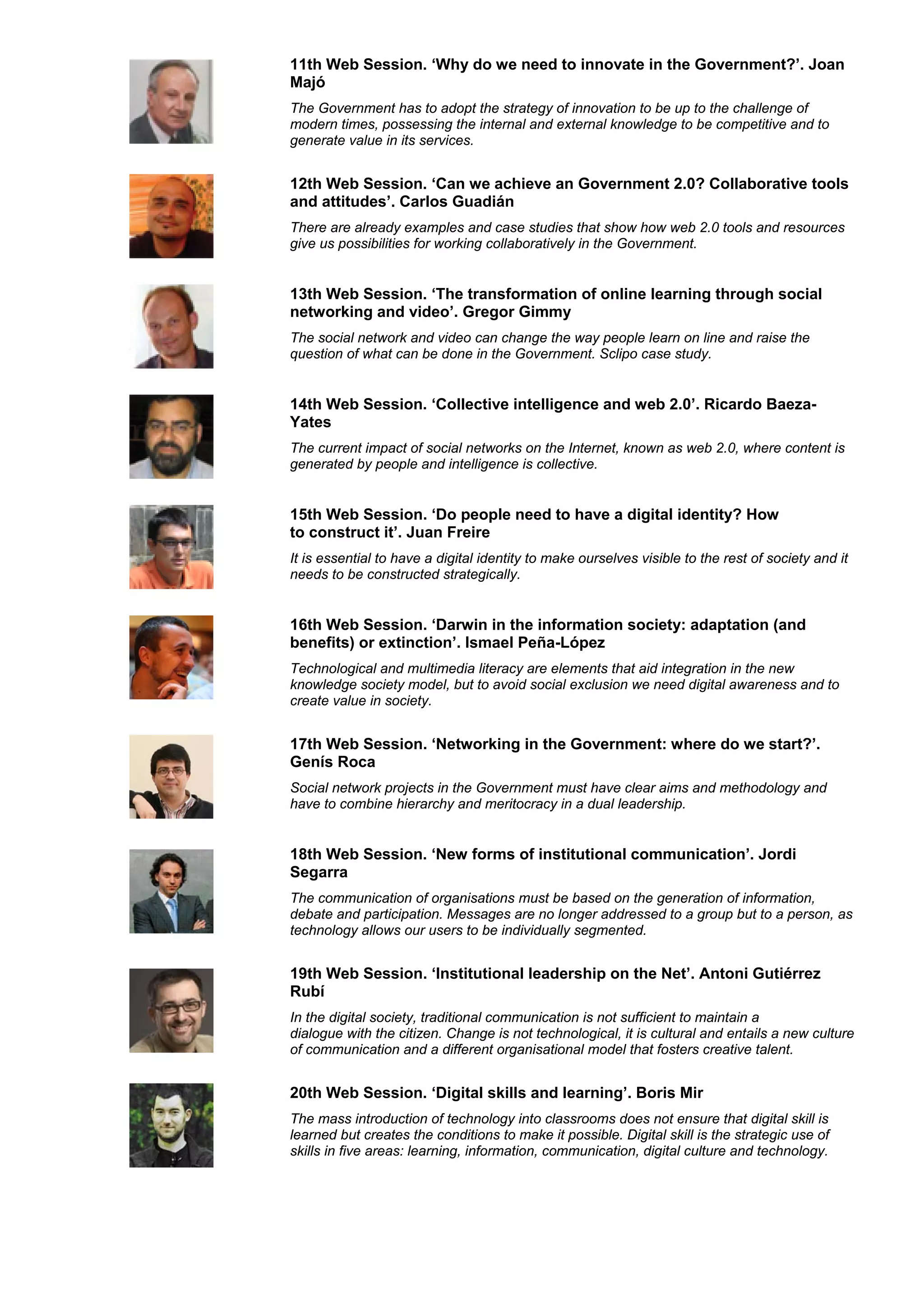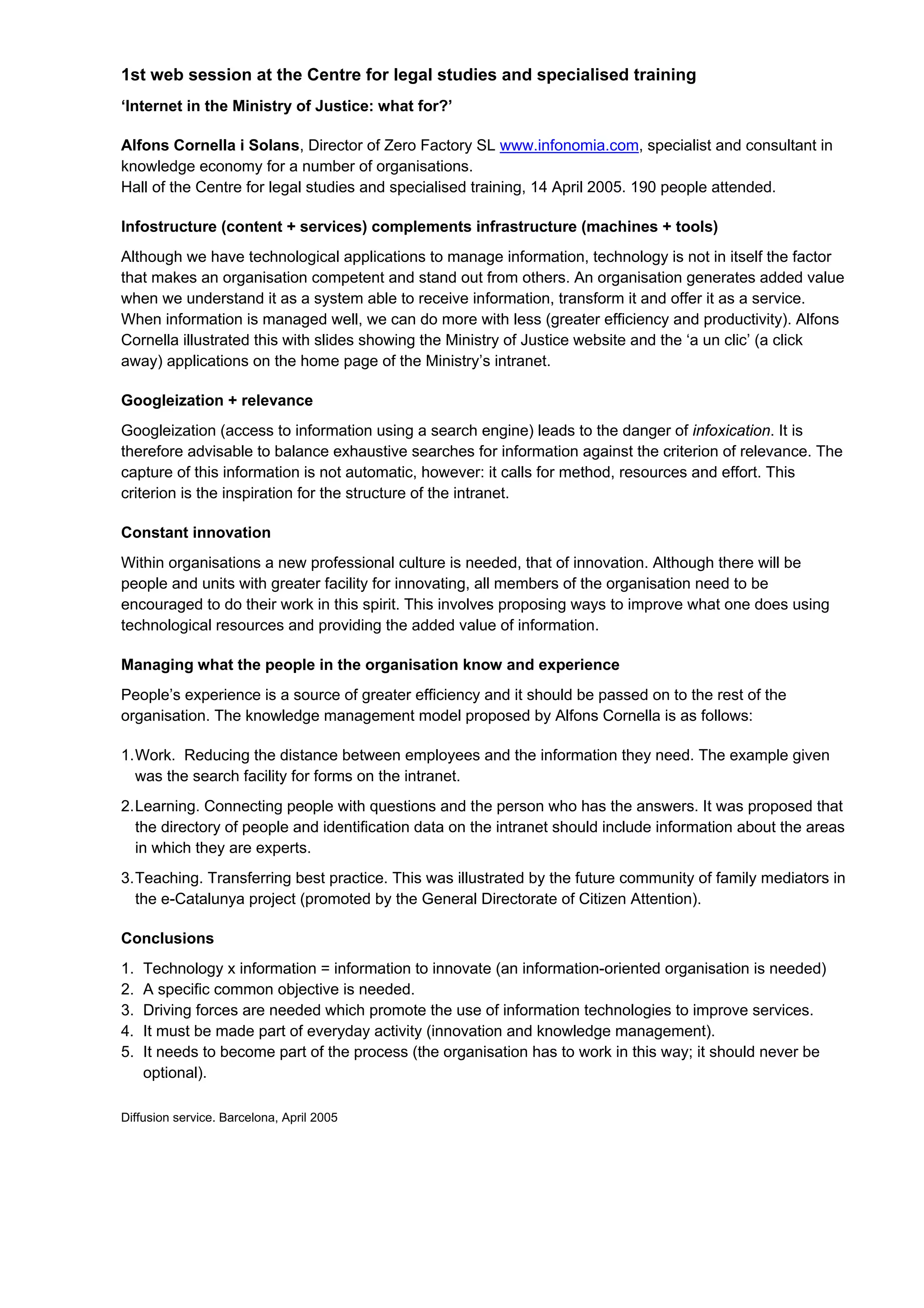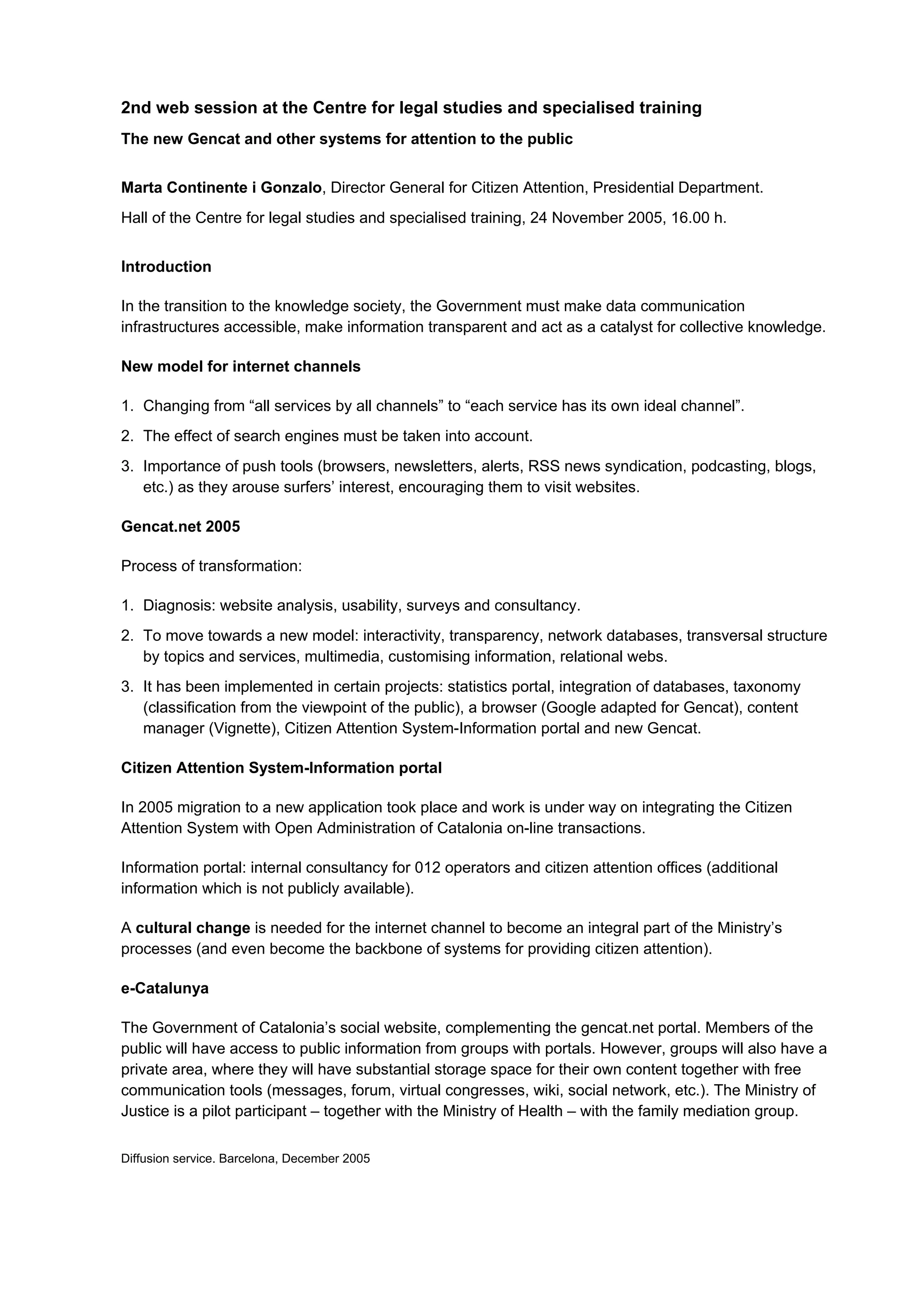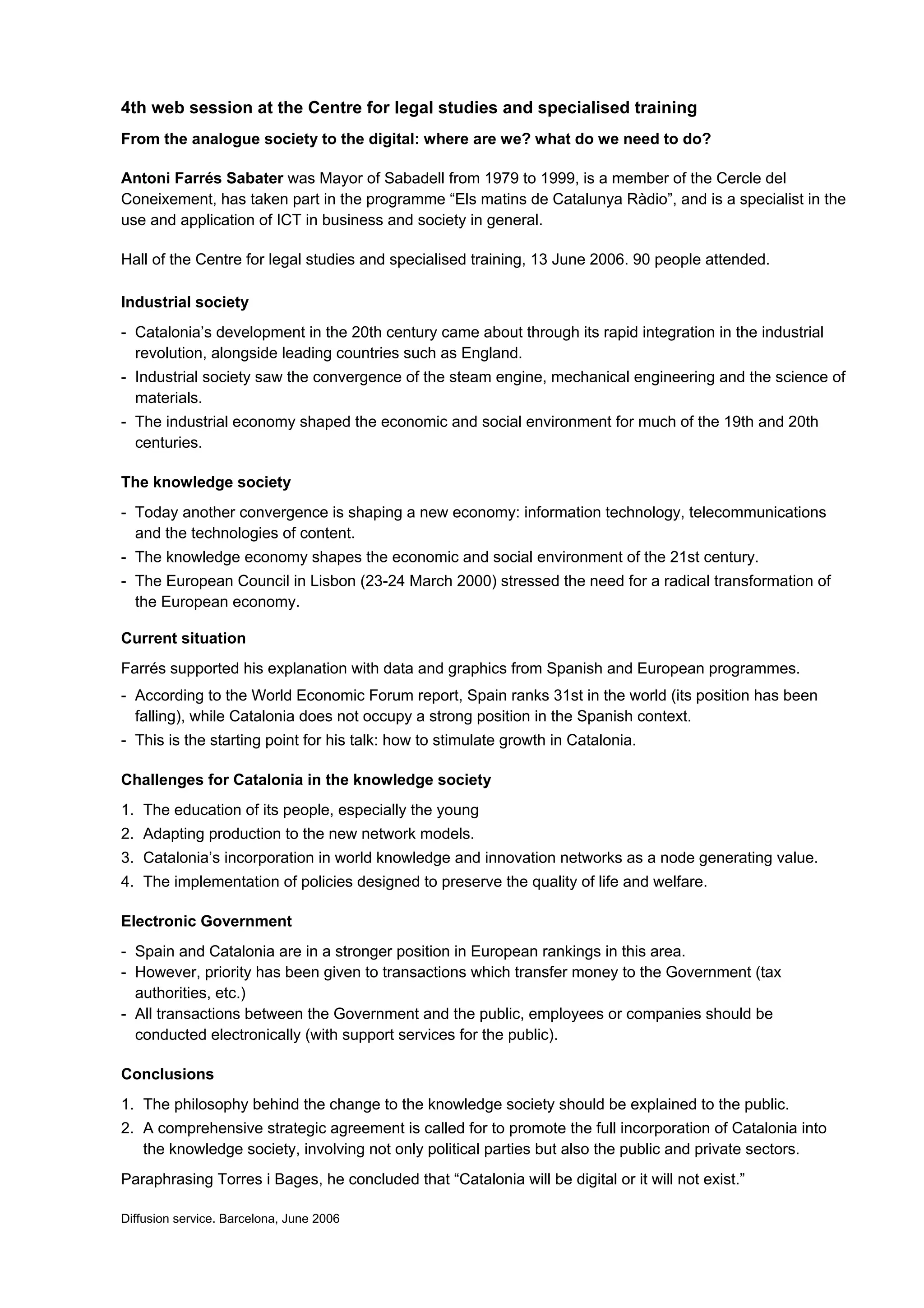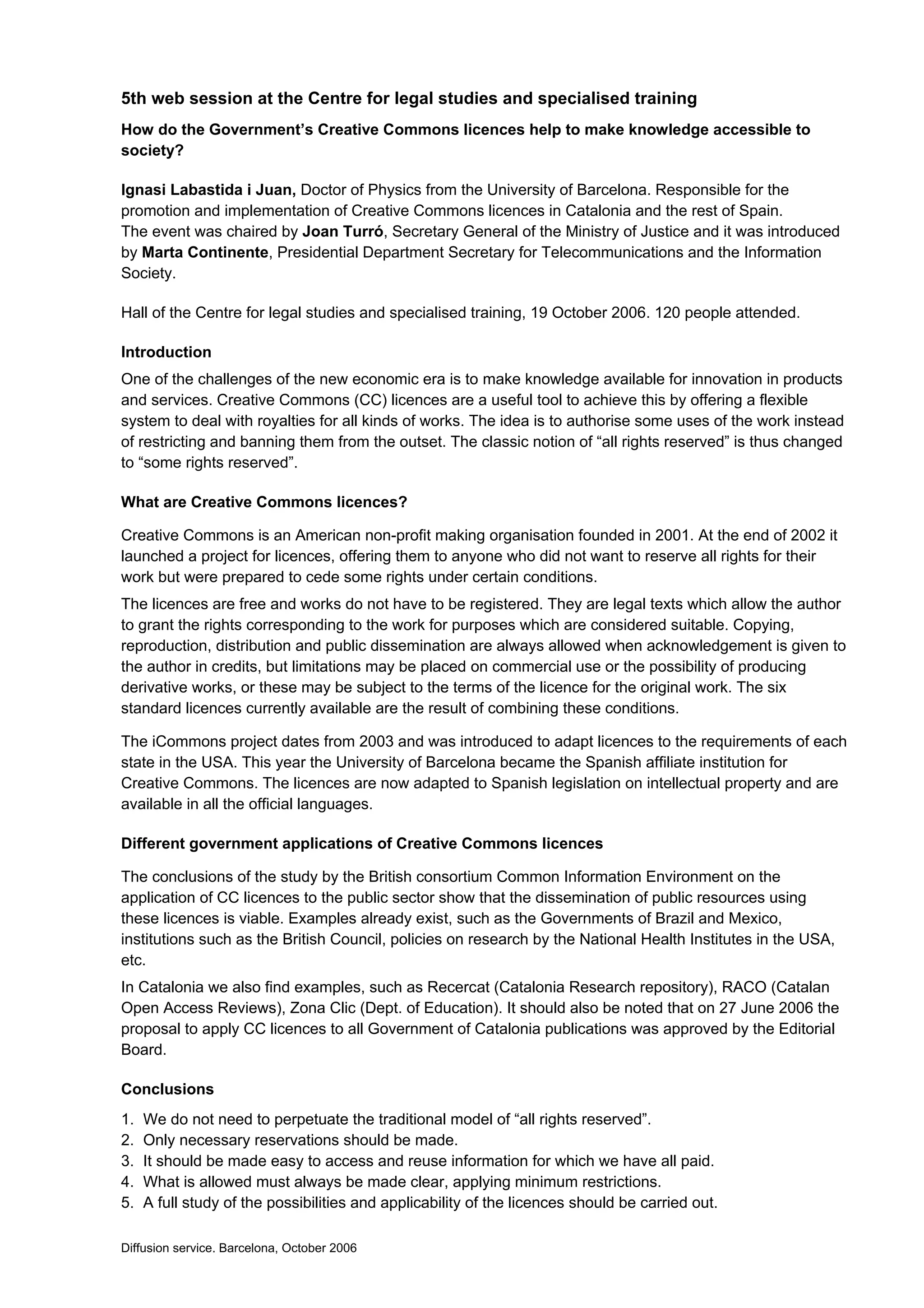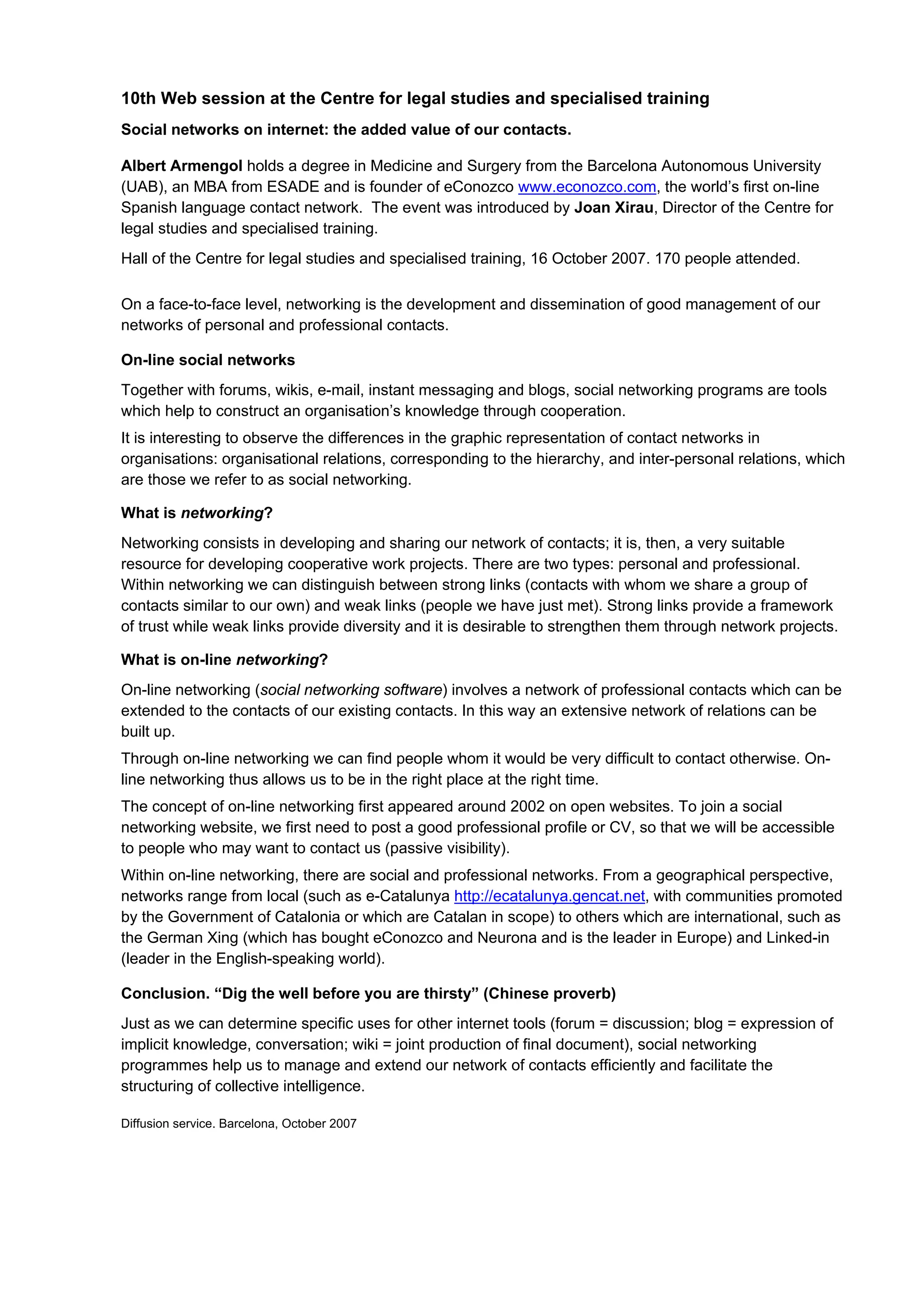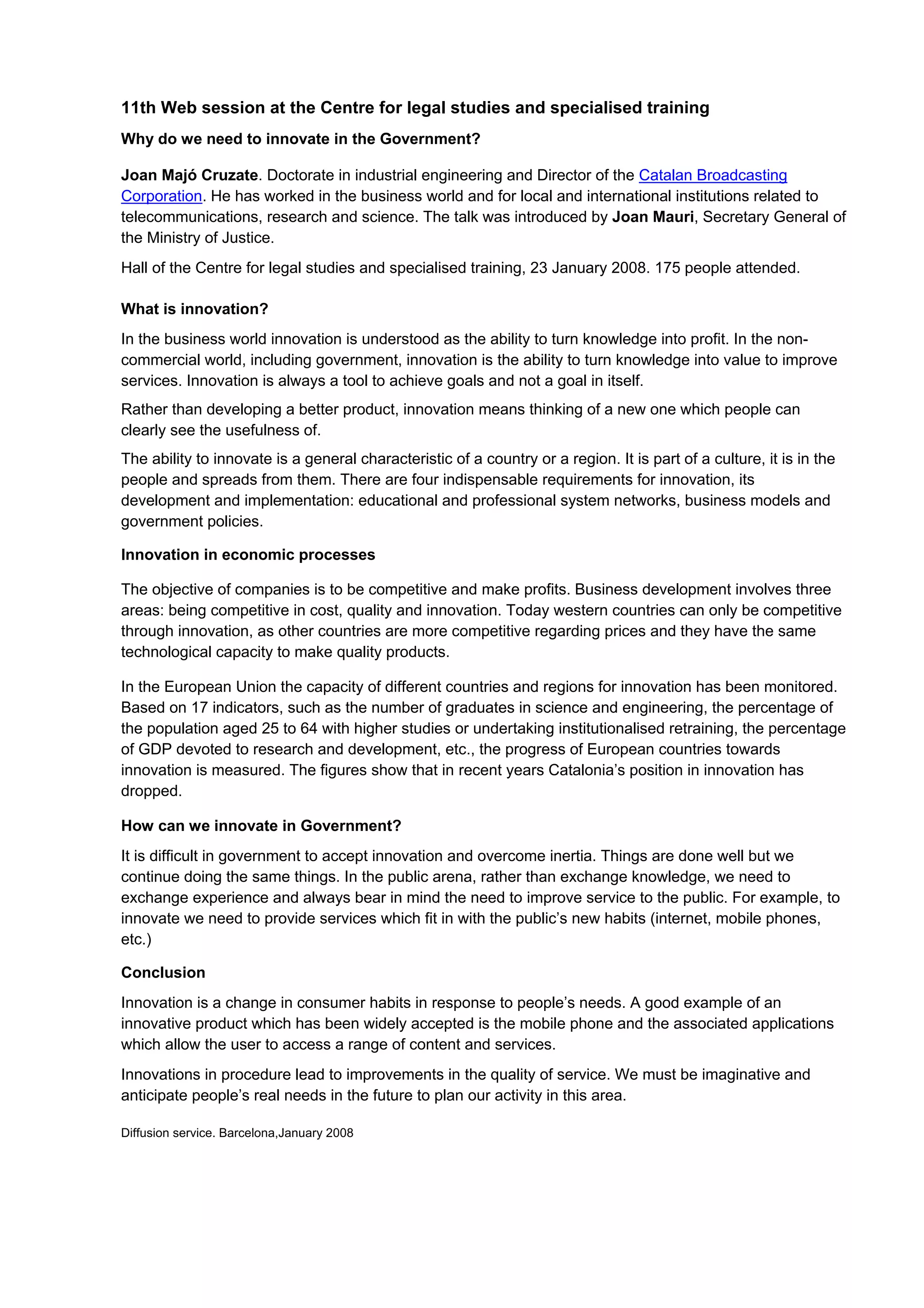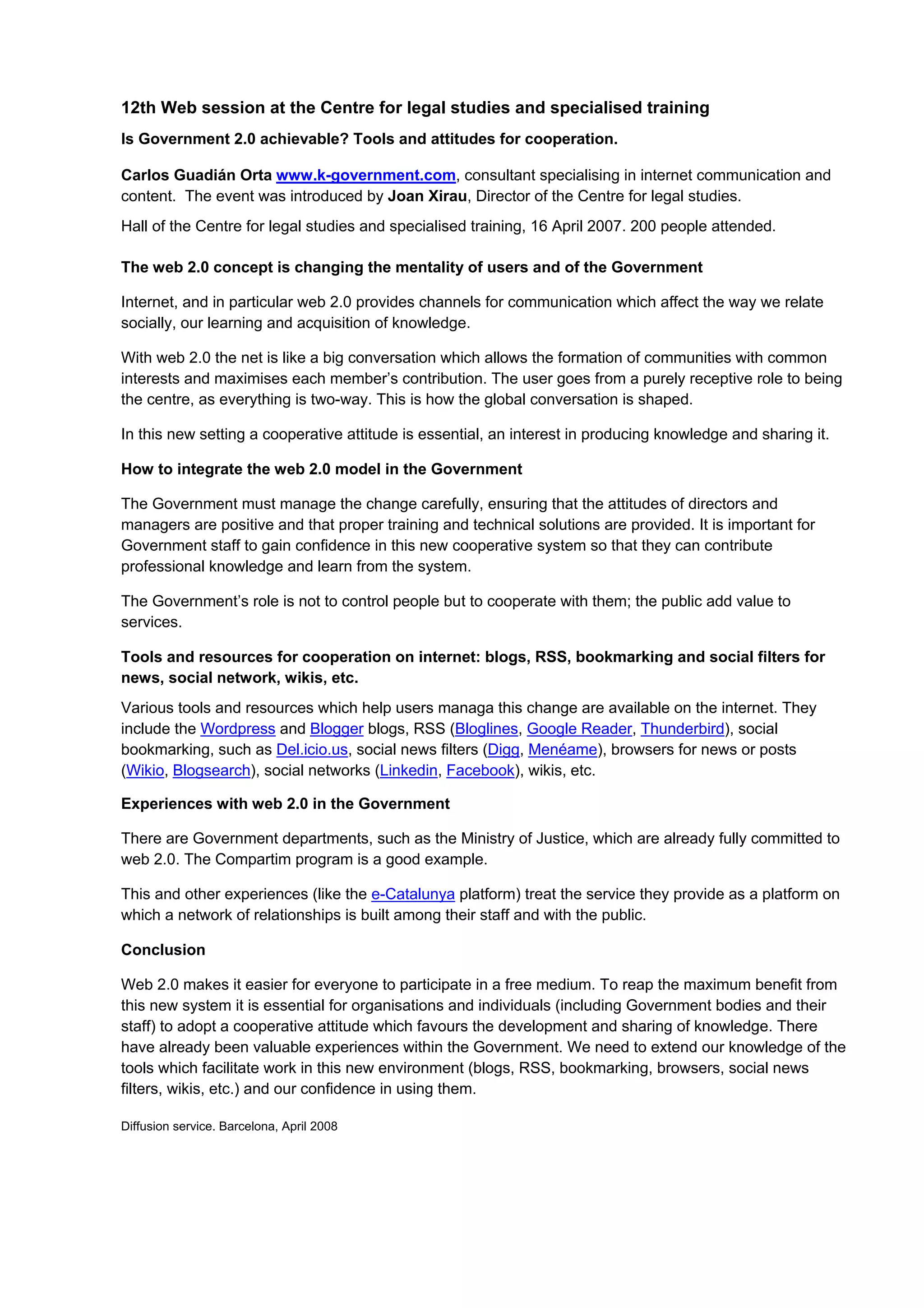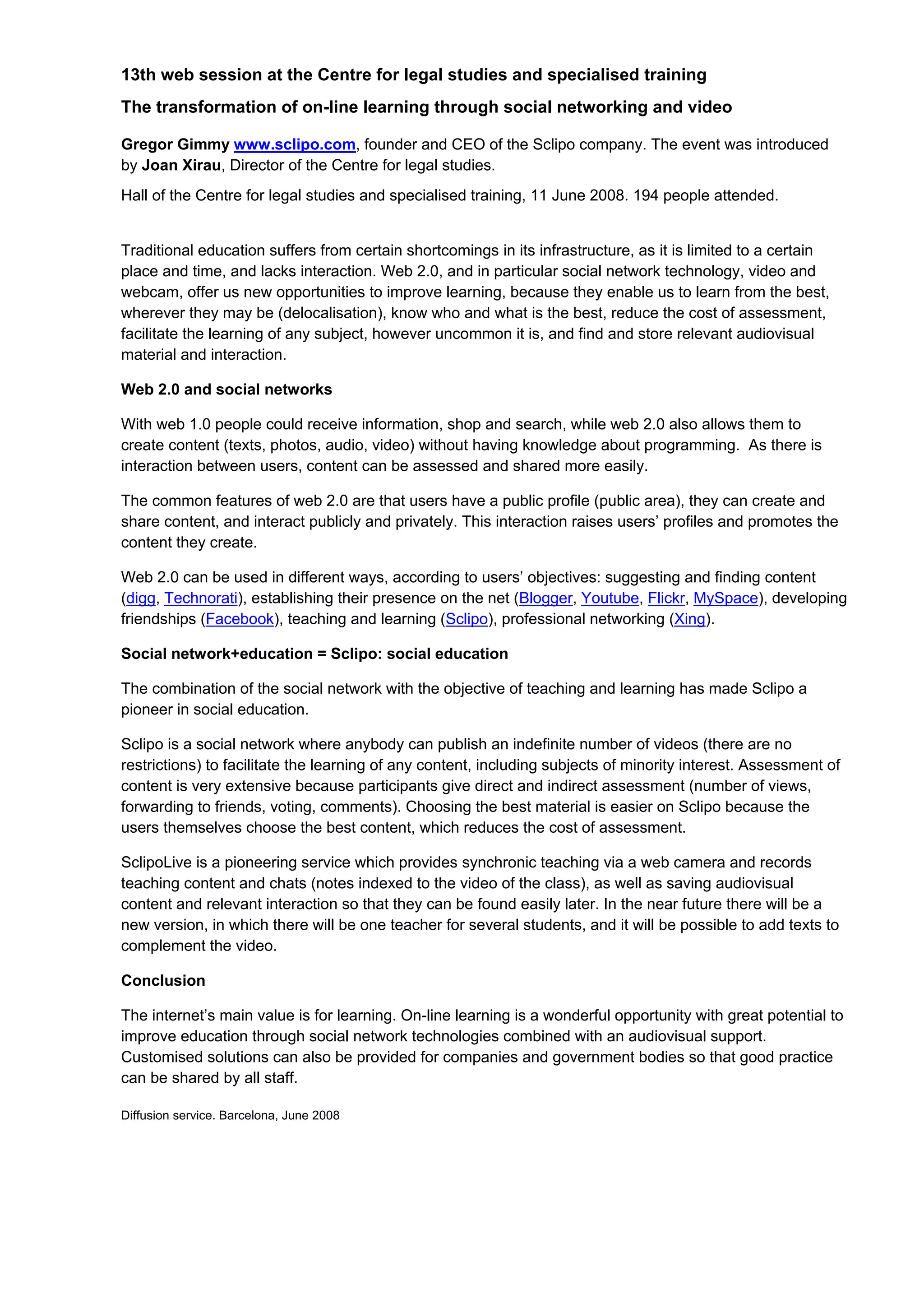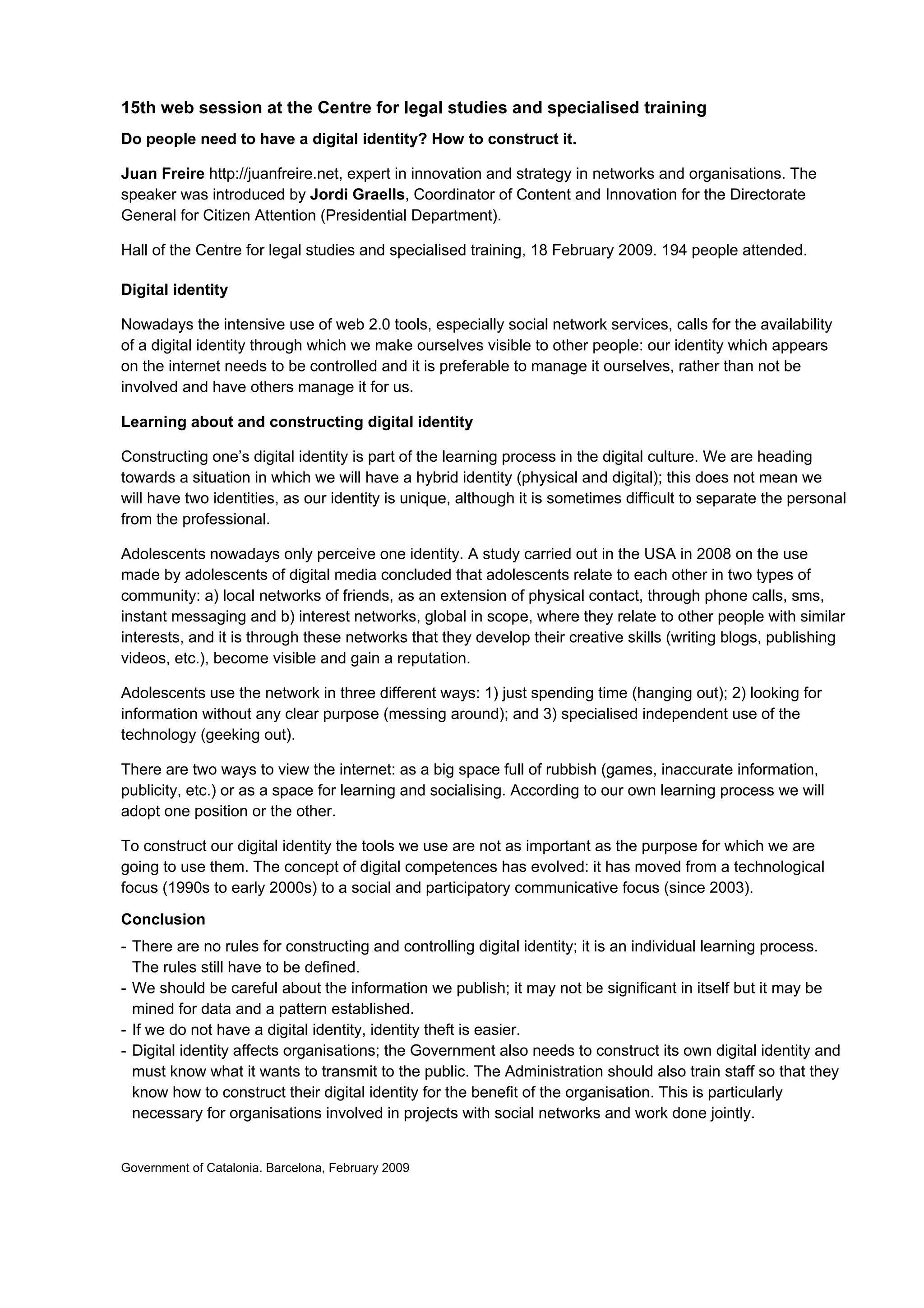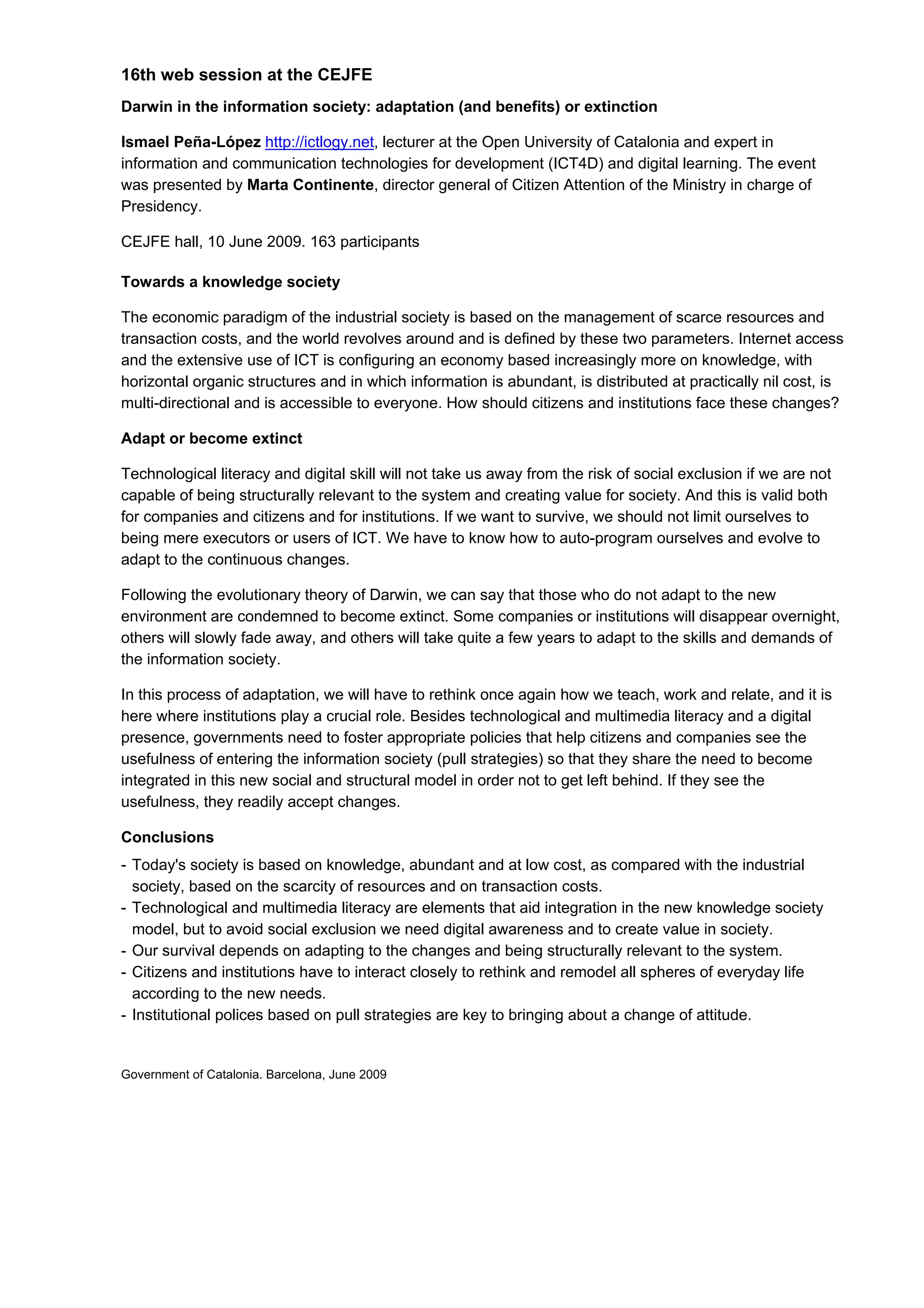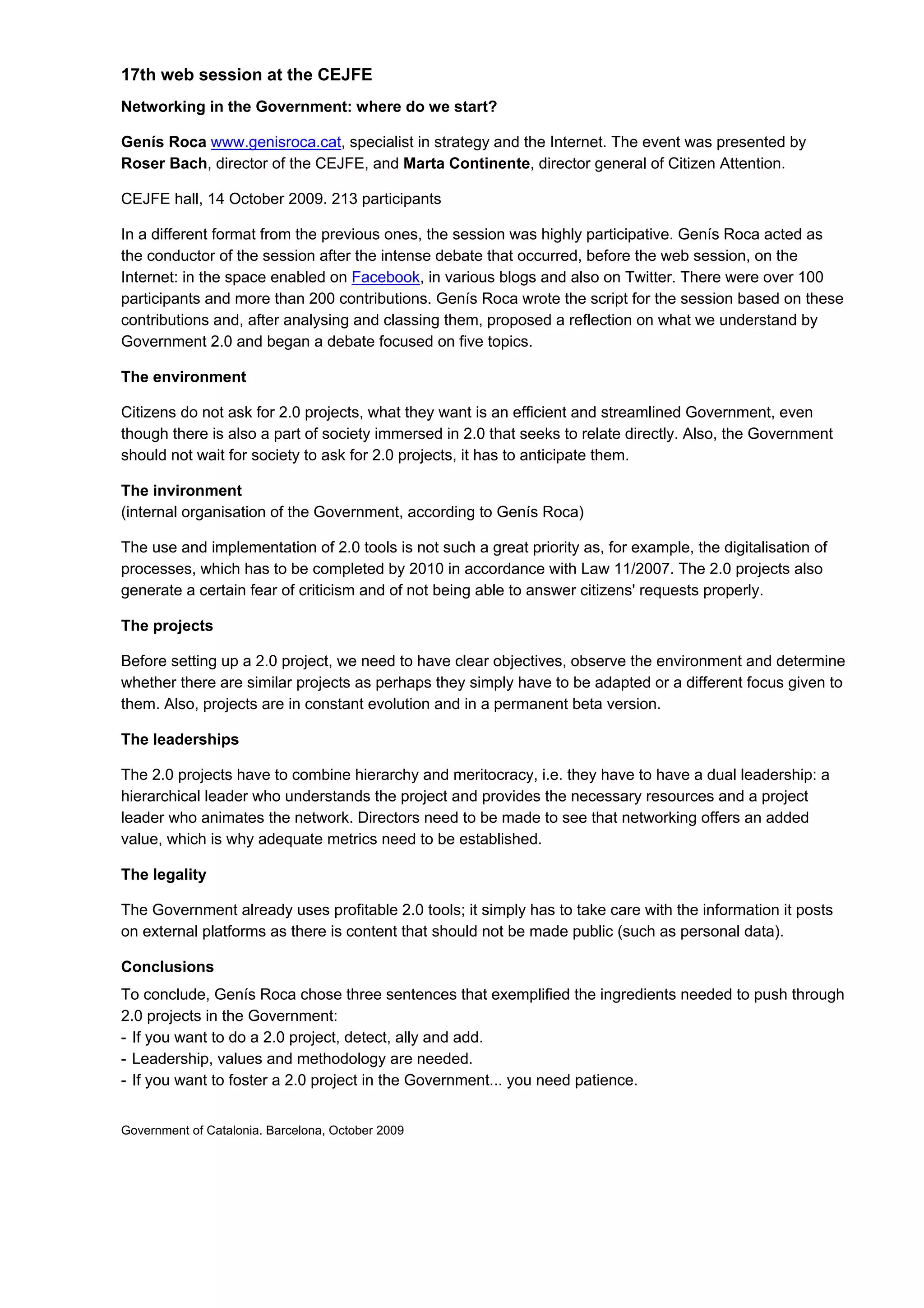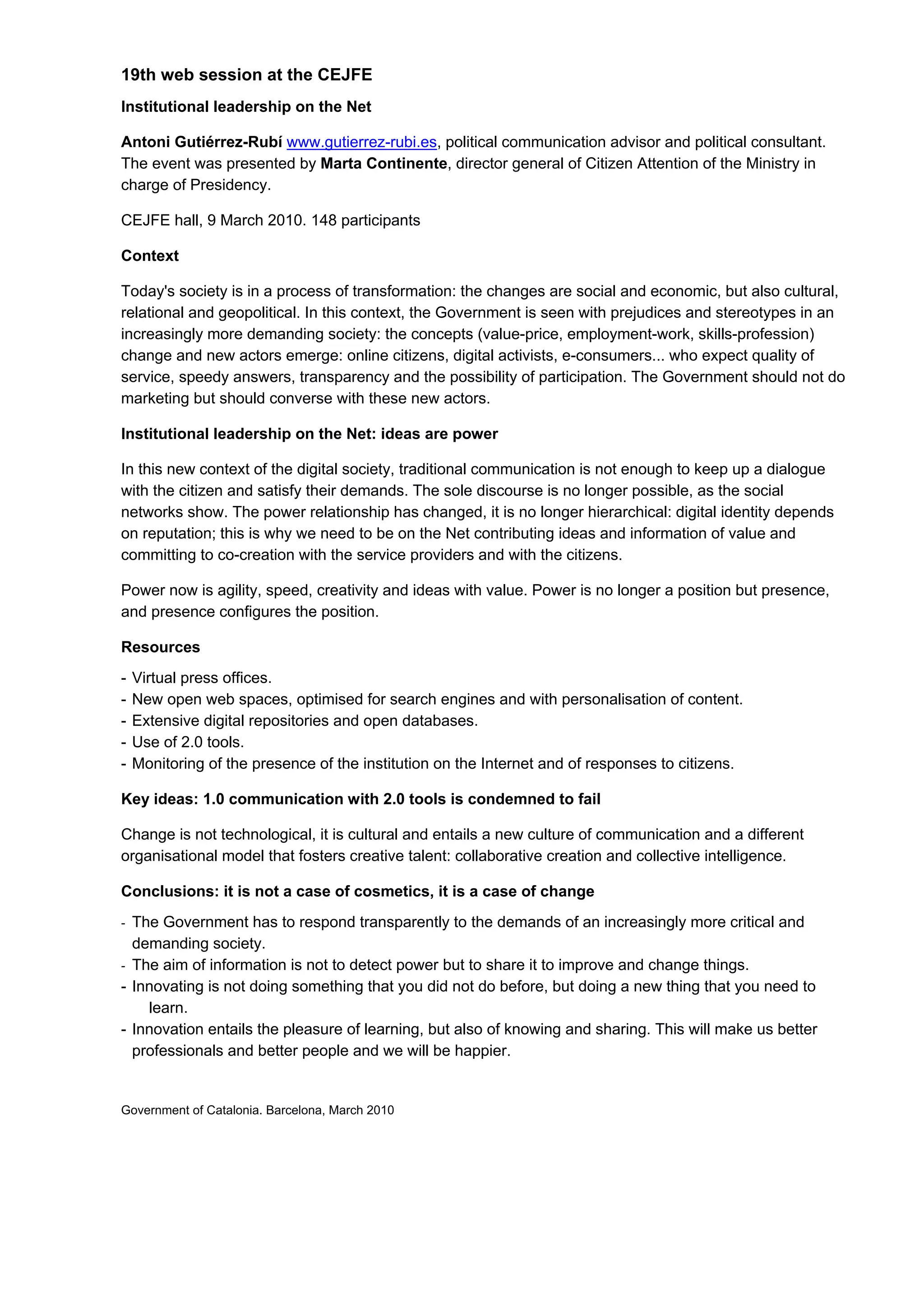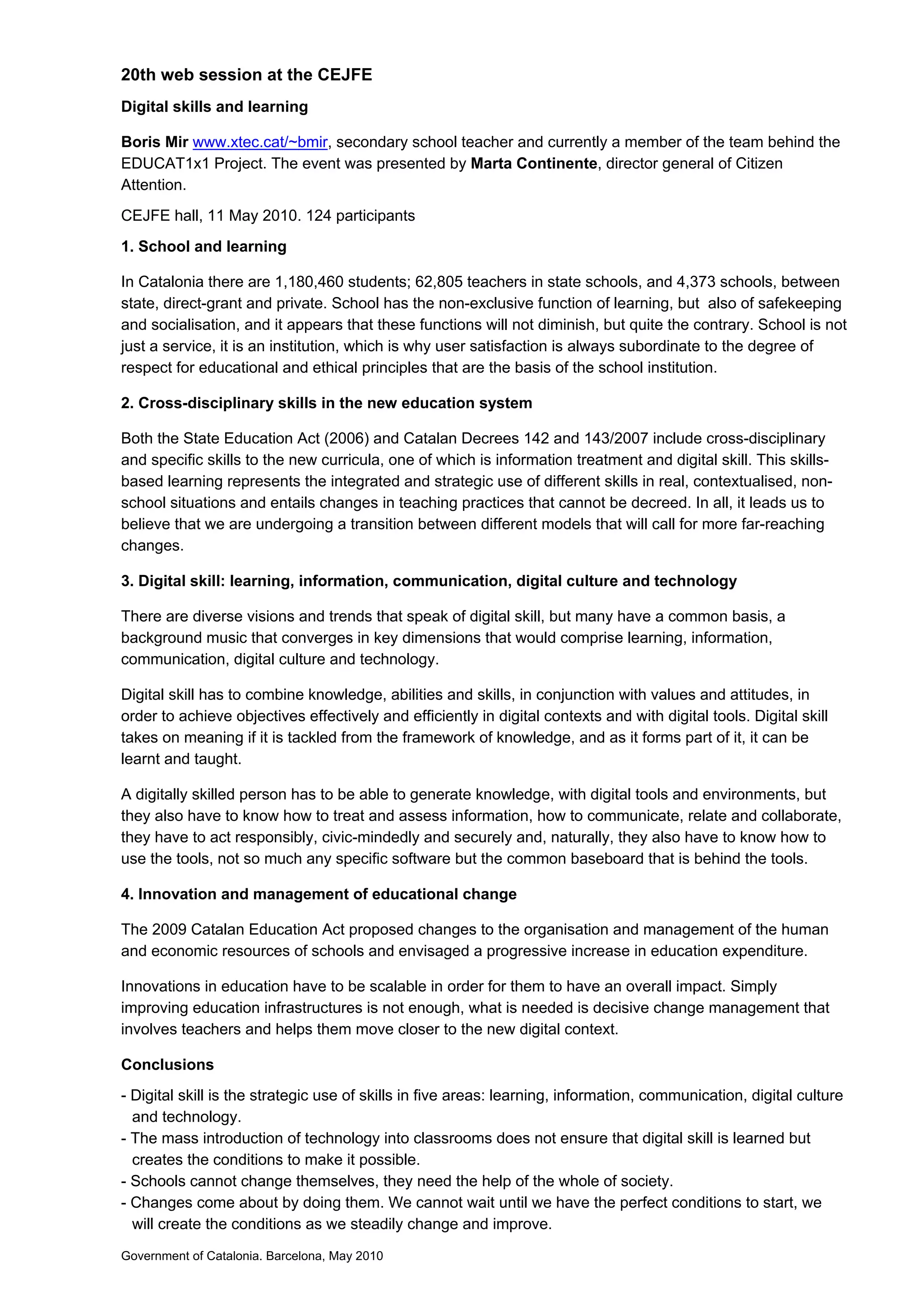The document outlines a series of web sessions held between 2005 and 2010 focusing on the role of technology and digital communication in the Catalonian government and the Ministry of Justice. Key themes include the transition to a knowledge society, the importance of collaboration, and the need for innovation within government processes. It emphasizes the use of tools like Creative Commons licenses to enhance knowledge accessibility and the significance of promoting digital skills and community practices among government personnel.

